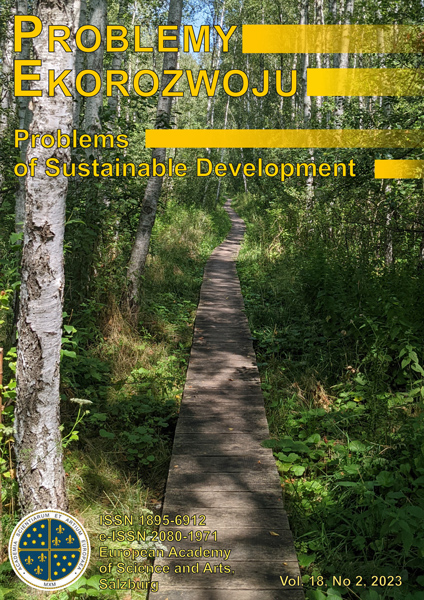ASARA V., OTERO I., DEMARIA F., CORBERA E., 2015, Socially Sustainable Degrowth as a Social-Ecological Transformation, Sustainability Science 10(3): 375-384.
DOI: https://doi.org/10.1007/s11625-015-0321-9
ATKINSON A.B., 1970, On the Measurement of Inequality, Journal of Economic Theory 2(3): 244-263.
DOI: https://doi.org/10.1016/0022-0531(70)90039-6
BEEKS J.C., 2016, Which of the current diverse ideas on alternative Economics are the best for adequately and Compre-hensively addressing the great Transition to climate, energy and biodiversity Sustainability? California Institute of Integral Studies, San Francisco, CA.
BELING A.E., VANHULST J., DEMARIC F., RABI V., CARBALLO A. E., PELENC J., 2018, Discursive Synergies for a ‘Great Transformation’ Towards Sustainability: Pragmatic Contributions to a Necessary Dialogue Between Human Development, Degrowth, and Buen Vivir, Ecological Economics 144: 304-313, https://doi.org/10.1016/j.ecolecon.2017.08.025.
DOI: https://doi.org/10.1016/j.ecolecon.2017.08.025
BENKING H., MEHLMANN M., 2017, #30 Visions of Sustainability – 2017, https://www.academia.edu/41755849/_30_Visions_of_Sustainability_2017?email_work_card=title (26.09.2021).
DRASTICHOVA M., 2018, The Theory and Measurement of Sustainable Development, SAEI, 52, VSB-TU Ostrava, Ostrava.
DRASTICHOVA M., FILZMOSER P., 2019, Assessment of Sustainable Development Using Cluster Analysis and Principal Component Analysis, Problemy Ekorozwoju/ Problems of Sustainable Development 14(2): 7-24.
DRASTICHOVA M., FILZMOSER P., 2021, Factors of Quality of Life in a Group of Selected European Union and OECD Countries, Problemy Ekorozwoju/ Problems of Sustainable Development 16(2): 75-93.
DOI: https://doi.org/10.35784/pe.2021.2.09
ECG, 2021, The Economy for the Common Good, https://www.ecogood.org/what-is-ecg/theory-behind-ecg/ (14.01.2022).
ECKERSLEY R., 2006, Progress, sustainability and human well-being: is a new worldview emerging? International Journal of Innovation and Sustainable Development 1(4):304-317.
DOI: https://doi.org/10.1504/IJISD.2006.013733
EUROSTAT, 2021, Eurostat Database, https://ec.europa.eu/eurostat/data/database (28.09.2021).
FITOUSSJ.P., SEN A. K., STIGLITZ J. E., 2011, Mismeasuring Our Lives: Why GDP Doesn't Add Up, The New Press, New York.
FRITZ M., KOCH M., 2016, Economic development and prosperity patterns around the world: Structural challenges for a global steady-state economy, Global Environmental Change 38: 41-48.
DOI: https://doi.org/10.1016/j.gloenvcha.2016.02.007
GEISENDORF S., PIETRULLA F., 2017, The circular economy and circular economic concepts-a literature analysis and redefinition, Thunderbird International Business Review 60, https://doi.org/10.1002/tie.21924.
DOI: https://doi.org/10.1002/tie.21924
GNEGNE Y., 2009, Adjusted Net Saving and Welfare Change, Ecological Economics 68(4): 1127-1139.
DOI: https://doi.org/10.1016/j.ecolecon.2008.08.002
GUOMEI Z., JUN Z., HUAYOU L., JING W., ANDERSON R., LINDHJEM H., VENNEMO H., VICINI G., 2006, International experiences with environmental and economic accounting PRCEE, ECON and FEEM.
HELLIWELL J.F., LAYARD R., SACHS J. D., DE NEVE J.-E., AKNIN L., WANG S., 2021, World Happiness Re-port 2021, Sustainable Development Solutions Network, New York, https://worldhappiness.report/ed/2021/happiness-trust-and-deaths-under-covid-19/ (14.11.2021).
HUSSAIN M., 1994, Human geography, Rawat Publications, Jaipur.
IUCN, UNEP & WWF, 1991, Caring for the Earth: a Strategy for Sustainable Living. Gland, Switzerland.
JOHNSON R.A., WICHERND.W., 2007, Applied Multivariate Statistical Analysis, 6th ed., Pearson Education, United States.
KALLIS G., 2011, In Defence of Degrowth, Ecological Economics 70: 873-880.
DOI: https://doi.org/10.1016/j.ecolecon.2010.12.007
KOMIYAMA H., TAKEUCHI K., 2016, Sustainability science: building a new discipline, Sustain. Sci. 1: 1-6, https://doi.org/10.1007/s11625-006-0007-4.
DOI: https://doi.org/10.1007/s11625-006-0007-4
KOTHARI A., DEMARIA F., ACOSTA A., 2014, Buen vivir, degrowth and ecological swaraj: alternatives to sustainable development and the green economy, Development 57: 362-375, https://doi.org/10.1057/dev.2015.24.
DOI: https://doi.org/10.1057/dev.2015.24
LA NOTTE A., D’AMATO D., MAKINEN H., PARACCHINI M.-L., LIQUETTE C., EGOH B., GENELETTI, D., CROSSMAN N. D., 2017, Ecosystem services classification: A systems ecology perspective of the cascade framework, Ecological Indicators 74: 392-402, https://doi.org/10.1016/j.ecolind.2016.11.030.
DOI: https://doi.org/10.1016/j.ecolind.2016.11.030
LOREK S., SPANGENBERG J.H., 2014, Sustainable consumption within a sustainable economy – beyond green growth and green economies, Journal of Cleaner Production 63: 33-44, https://doi.org/10.1016/j.jclepro.2013.08.045.
DOI: https://doi.org/10.1016/j.jclepro.2013.08.045
MAES J., LIQUETE C., TELLER A., ERHARD M., PARACCHINI M. L., BARREDO J. I., GRIZZETTI B., CAR-DOSO A., SOMMA F., PETERSEN J., 2016, An indicator framework for assessing ecosystem services in support of the EU Biodiversity Strategy to 2020, Ecosystem services 17: 14-23.
DOI: https://doi.org/10.1016/j.ecoser.2015.10.023
MOSTEANU D., MIHAILALICA G., HALMAGHI E.-E., MOSTEANU R., 2014. The Sustainable Development – Human Development, Management and Economics 73: 106-113.
MULLER F., BURKHARD B., 2012, The indicator side of ecosystem services, Ecosystem Services 1(1): 26-30.
DOI: https://doi.org/10.1016/j.ecoser.2012.06.001
O’NEILL D.W., FANNING A.L., LAMB W.F., STEINBERG J.K., 2018, A good life for all within planetary bounda-ries, Nat. Sustain. 1: 88-95, https://doi.org/10.1038/s41893-018-0021-4.
DOI: https://doi.org/10.1038/s41893-018-0021-4
RUZZENENTI F., VIVANCO D. F., GALVIN R., SORRELL S., WAGNER A., WALNUM H.J., 2019, The Rebound Effect and the Jevons' Paradox: Beyond the Conventional Wisdom, Frontiers in Energy Research 7, https://doi.org/10.3389/fenrg.2019.00090.
DOI: https://doi.org/10.3389/fenrg.2019.00090
SCHUMACHER E.F., 2011, Small is beautiful: A study of economics as if people mattered. Random House, New York.
SINHA B., 2019, Multidimensional Approach to Quality of Life Issues. A Spatial Analysis, Springer Nature Singapore Pte Ltd, Singapore.
DOI: https://doi.org/10.1007/978-981-13-6958-2
SPANGENBERG J.H., 2014, Institutional change for strong sustainable consumption: sustainable consumption and the degrowth economy, Sustainability: Science, Practice and Policy 10(1): 62-77, https://doi.org/10.1080/15487733.2014.11908125.
DOI: https://doi.org/10.1080/15487733.2014.11908125
Organisation for Economic Co-Operation and Development (OECD), 2011, Towards Green Growth: Monitoring Pro-gress – OECD Indicators, Paris, France.
TEEB, 2009, The economics of ecosystems and biodiversity for national and international policy makers – summary: responding to the value of nature 2009, TEEB, Geneva, Switzerland.
UNITED NATIONS Development Programme (UNDP), 2022, Human Development Reports, New York, USA, http://hdr.undp.org/en/humandev (30.01.2022).
UNITED NATIONS Development Programme (UNDP), 2015, Human Development Report 2015. Work for Human Development, New York, USA, http://hdr.undp.org/sites/default/files/2015_ human_development_report.pdf (13.12.2021).
UNITED NATIONS Environment Programme (UNEP), 2011, Towards a Green Economy: Pathways to Sustainable Development and Poverty Eradication, New York, USA.
UNITED NATIONS, European Commission, International Monetary Fund, OECD, World Bank, 2003, Handbook of National Accounting. Integrated Environmental and Economic Accounting 2003, Studies in Methods, Series F, No. 61, Rev. 1 (ST/ESA/STAT/SER.F/61/Rev.1).
VAN DEN BERGH J.C.J.M., KALLIS G., 2012, Growth, A-Growth or Degrowth to Stay within Planetary Boundaries?, J. Econ. 46: 909-920.
DOI: https://doi.org/10.2753/JEI0021-3624460404
WALLACE K.J., 2007, Classification of ecosystem services: problems and solutions, Biological Conservation 139: 235-246, https://doi.org/10.1016/j.biocon.2007.07.015.
DOI: https://doi.org/10.1016/j.biocon.2007.07.015
WCED, 1987, Our common future, Oxford University Press: Oxford, New York.
WIEDMANN T.O., SCHNADL H., LENZEN M., MORAN D., SUH S., WEST J., KANEMOTO K., 2015, The material footprint of nations, Proc Natl Acad Sci USA 112(20): 6271-6, https://doi.org/10.1073/pnas.1220362110.
DOI: https://doi.org/10.1073/pnas.1220362110
WORLD BANK, 2021, Data Bank, Adjusted Net Savings, https://databank.banquemondiale.org/source/adjusted-net-savings/preview/on.
WORLD RESOURCES INSTITUTE, 2005, Millennium Ecosystem Assessment, Ecosystems and Human Well-being: Synthesis, Island Press, Washington, DC, http://www.millenniumassessment.org/documents/document.356.aspx.pdf.







